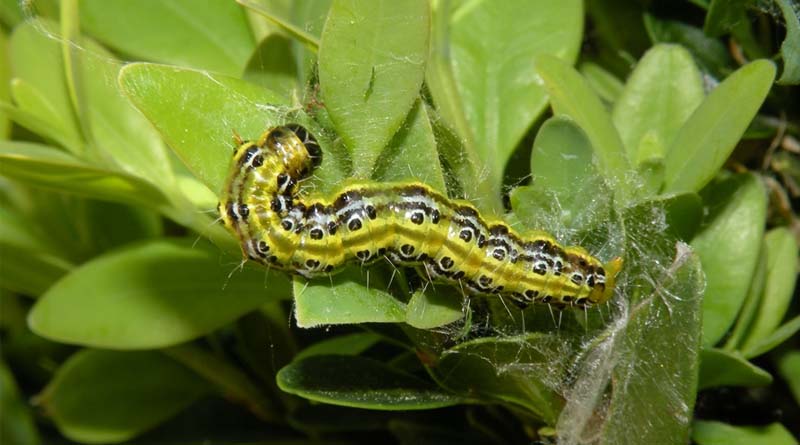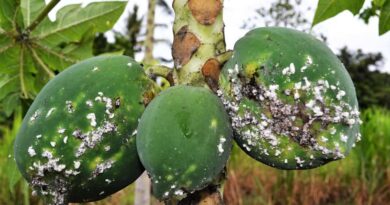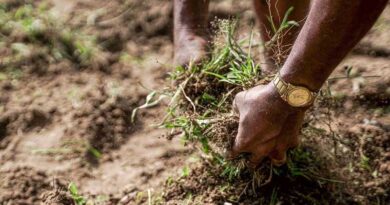Model Predicts Future Spread of Box Tree Moth in North America
08 May 2024, Africa: CABI scientists have led research with collaborations from the University of Toronto and University of Guelph, both in Canada, to update a model which predicts the future spread of the box tree moth (Cydalima perspectalis) in North America.
The research, published in the journal PlosOne, shows how the ecoclimatic CLIMEX model predicts that most of North America should be climatically suitable for the establishment of the moth which feeds on boxwood (Buxus spp.).
However, the model suggests that Alaska and the northern territories of Canada, as well as higher elevations in the Rocky Mountains and southern hot and dry areas, will be out of reach for the box tree moth which is native throughout eastern Asia.
Rapidly spreading
Box tree moth became invasive in Europe in 2007 and rapidly spread across Europe and the Caucasus – causing damage to both ornamental and wild Buxus. In 2018, the box tree moth was found in Toronto and has since spread south into the USA.
To better predict where the moth will establish and have a significant impact on the ornamental trade in North America, the scientists used the most recent scientific literature and distribution points to update the temperature and diapause indices of an existing ecoclimatic CLIMEX model.
CABI’s Dr Lukas Seehausen and Dr Marc Kenis were part of the team who also found that their results show the currently known native distribution of box tree moth in Asia is probably incomplete and that further expansion is possible in its introduced range in Europe.
This includes northern Europe, along the Mediterranean coast of Africa, and eastward to central Russia.
Choice of management options
Dr Seehausen, Research Scientist, Risk Analysis & Invasion Ecology, said, “Our study highlights the risk of box tree moth spreading in its newly invaded areas, especially North America, and the importance of the CLIMEX model to help make decisions in terms of regulatory dispersal restrictions and choice of management options.”
The scientists say that the Ecoclimatic Index (EI) of the model correctly described the known distribution of box tree moth in Asia with one exception, Lhasa Tibet. This may have resulted from either misidentification or, more likely, due to some unique favourable condition on ornamental Buxus spp. allowing it to establish temporarily.
Generally, the study shows that box tree moth occurred in a few locations where the model predicted it would not be suitable. But it is possible that recent import of plants from other areas or local favourable conditions, such as watering or warmer microclimates in cities were created in these areas due to human activity.
Further biological studies are needed
Dr Kenis, Head Risk Analysis, and Invasion Ecology, said, “Further biological studies are needed to examine the temperature-dependent effects on box tree moth to improve our ability to predict its impact and develop effective management.
“Specifically, box tree moth’s performance (development and survival) at high temperatures above 30°C and mortality induced by extreme low temperatures during diapause still need to be investigated.”
He added that a better understanding is needed of the moth’s distribution in its native range and potential adaptations and/or genetic differences between populations in different countries within its native range (e.g., Japan, China, Korea, and Thailand).
“This may help to improve model parameters but also to find appropriate management options, such as specialized and well adapted natural enemies that can be considered for biological control,” Dr Kenis said.
Built upon previously developed model
In October 2013, Dr Kenis was part of a team, that also included CABI’s Dr Saidou Nacambo, and Dr Tim Haye, who developed a bioclimatic CLIMEX model.
This was part of research, published in the Journal of Applied Entomology, which investigated the development characteristics of the box tree moth and its potential distribution in Europe.
The study then said that the box tree moth has the potential of becoming a pest in most of its predicted range, but that damage is likely to be higher in Southern and Central Europe where the moth can complete at least two generations per year.
Also Read: BASF Launches New Insecticide Efficon With Axalion Active Introduced Under IRAC Group 36
(For Latest Agriculture News & Updates, follow Krishak Jagat on Google News)















